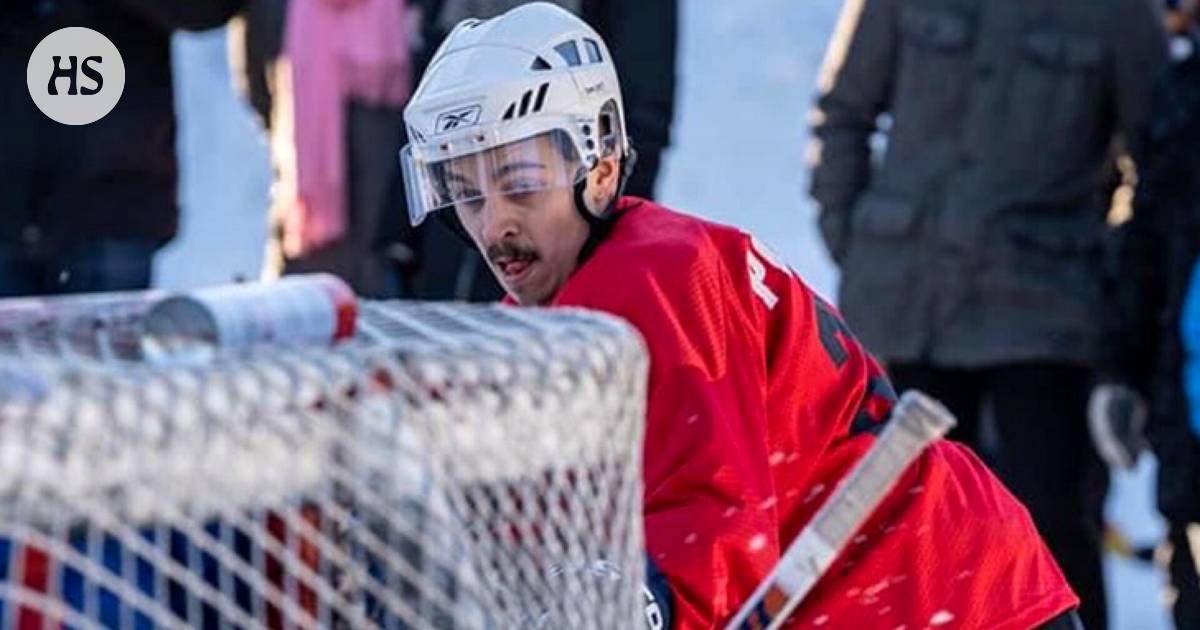The wrapper loved hockey as a junior. He played on the same team as the future NHL star.
Kiekko-Vantaa one day in the early years of the 2000s, there was a surprise in the booth of the junior team. A small boy with long hair and a black beanie entered the booth. The beanie read “Chief” in big letters.
“The guy was thirty meters tall, and he had a captain’s cap,” recalls a former teammate Jesse Voss.
The same guy had made an impression in his first training at the age of 9.
“The mouth was open, and the style of play had an Eastern Helsinki jaggedness. I noticed right away that this isn’t just any other guy, but one in a million -type.”
Kopi’s revelation was of primary school age Jere Pöyhönen. A boy the size of a foam extinguisher grew into Finland’s hottest superstar of the moment, Eurovision representative Käärijä.
The table now dominates the big music stage in Liverpool, but as a child hockey was his greatest love. Pöyhönen played latka up to A-junior in Vantaa Kiekko, Itä-Helsinki Kiekko and Kiekko-Vantaa.
Pöyhönen’s brother Mike was also a keen hockey player. The enthusiasm started when the brothers’ father took the little boys onto the ice at the Jakomäki field in Northeast Helsinki. The field of the infamous “Jakis” was the closest, as the family lived in Vaarala, Vantaa.
“I can remember the field with all my senses. The skates were changed in the barracks booth, which smelled of sock and skate sweat,” Mikke recalls.
The boys fell in love with skating. The winter evenings outside stretched late, and when the parents told to return home, sadness came to the sweater.
“We left with tears in our eyes.”
Mikke, who is two years older, says that the brothers’ fights with each other were tough. One had his turn in the goal, and the other shot sometimes with the flash and sometimes with the puck. Jere’s mouth was open, but Mikke gave back in equal measure.
“There were some skirmishes, but it didn’t turn out to be a hit job. We threw clubs and got angry if the other scored too many goals and didn’t catch anything himself. Small excesses, but no outrageousness.”
Mikke Pöyhönen also enjoys the magic of wisdom.
Mike’s favorite puck memory is when Pöyhösten’s mother bought the boys the biggest carbon fiber rackets in the shop: CCM’s blue Vectors, after a long delay.
“They were the hottest stuff and damn expensive! We wanted to look like decent players,” says Mikke.
“You couldn’t even play properly with them when the grip was so slippery. We didn’t score any goals with them. We just wanted status.”
21st century at the beginning, the Pöyhös moved to Ruskeasanta in Vantaa, near Tikkurila. The boys went to school at Simonkallio elementary school and started playing in Kiekko-Vantaa.
The team wasn’t just a bunch of slobs, but they were also looking for success. He was the toughest player in the group Esa Lindellwho is currently chasing the NHL playoffs on the blue line of the Dallas Stars.
Later, Pöyhönen’s team and friends also joined the team, who played as a goalkeeper in HIFK, but moved to Kiekko-Vantaa as a defender Petteri Lindbohm. Since then, Lindbohm has played 49 NHL games as a team and won both Olympic and World Cup gold.
Jere Pöyhönen’s idols were the Czech NHL legend Jaromir Jagr and a German soccer goalkeeper Oliver Kahn. Pöyhönen, who was a skilled skater and a little pocket rocket, seems to identify with the tough duo, however, more in terms of style than playing skills – after all, he trusted Pöyhönen’s jaggery swing.
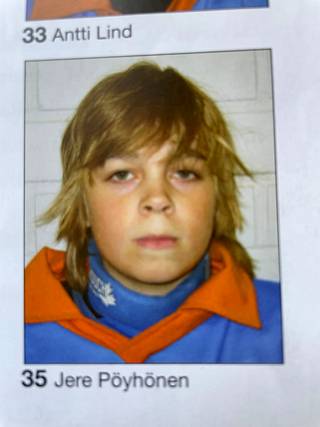
Pöyhönen relied on long hair in his childhood.
Voss remembers Pöyhönen, who played with number 35, as a classic type of attacker who was hated by the opponent, but loved by his own team.
“Jere was babbling so fast in the rink that no one could understand what he was saying. He bounced and bounced all over the field. When we returned to the booth, it always hurt and happened. The flap flew. Jere was a lively cheerleader and a well-liked booth player in our team,” says Voss.
The appreciation of his teammates was evident in 2004, when Pöyhönen was chosen among hundreds of hockey players as Kiekko-Vantaa’s junior of the year.
“The confession supports my story that Jere was liked, upright and fair, at the end of the day”Voss says.
He later got to know what Pöyhönen was like to his opponents. Voss moved to the capital’s big club HIFK. It’s time to go back to home, to Tikkurila’s ice rink, in Röda’s hut to play against Kiekko-Vantaa and old friends.
In the first start, number 35 skated next to him, who had a full visor on his helmet instead of a cage, which Voss thought was “the sign of an annoying player”. That’s the end of it.
”
It was damn bad to play when you couldn’t see where the diminutive Jere was whining.
“He started hitting on us, even though I tried to throw a friend flap. It was damn bad to play when you couldn’t see where the diminutive Jere was whining. He always came around the corner. When a dumb guy tackles, the rivet hits the middle of the body, when you can’t take it with your shoulder like a normal person. When Jere tackled, it was so bad,” says Voss and adds:
“We won the game.”
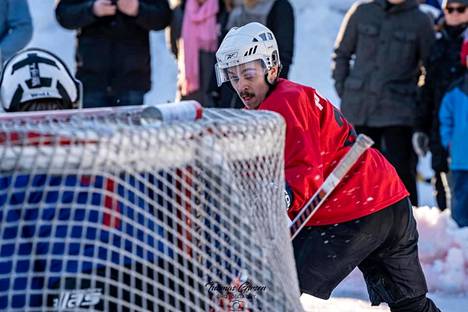
Pöyhönen in the Harjusuo winter classic in the -93-born team.
Loss certainly upset Pöyhö. His teammates say that he had an extremely strong competitive drive and will to win. If something in training made the boy burn out, even our own got a taste of the hidden vagina, that is, from a stick blow to the ribs made unnoticed by the referee or coach.
Mikke-veli says that Jere could have been in a state of excitement even at home if the tournament hadn’t ended with the trophy being lifted.
“Jere wasn’t much interested in honorary degrees. He always tore them. The attitude was win or nothing,” says Mikke.
“You can see the huge will to win in the music work here at the Eurovision venue in Liverpool. Jere has said since the New Music Contest that he is going to win the Eurovision Song Contest. Nothing other than returning to Finland with the victory trophy will do.”
Pöyhönen puck career waned in the teenage years. A group of friends, who had aspired to be professionals as children, realized in middle school that the dream was not realistic.
“When you start playing hockey like crazy, everyone wants to be theme parks this patrilineal subjects. When you get older, let’s measure that real desire. A lot of people say they want everything, but it’s measured in how you make duun”, Käärijä tells Ilta-Sanom in Liverpool.
“I didn’t do dune, that is, I didn’t want to be a professional launderer enough. Even if I had done dune, I probably still wouldn’t have gone pro. This music is my thing, and I’ve done everything I could.”
”
This music is my thing, and I’ve done my best here.
Käärijä played hockey until he was an A junior.
The Pöyhönen brothers also had to realize the hard way that they weren’t going to grow a puck player’s body.
“It was hard for both of us that we didn’t get the size. At that time, big size was emphasized in hockey. We would have had better opportunities ten years later, but we would still have been shorter than our opponents,” says Mikke.
Jere Pöyhönen is 162 centimeters tall.
Voss and Pöyhöset went to IHK as A-year-olds to grind the junior leagues.
Ultimately, Pöyhönen’s sports career was cut short by a life-threatening intestinal disease, which led to the removal of his colon at the age of 19.
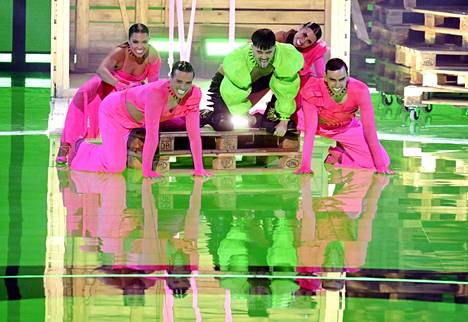
The wrapper made it to the Eurovision final.
Nowadays Pöyhönen can be seen on the ice playing hockey at least once a year. A group of friends from Vantaa’s Ruskeasanta organizes a Winter Classic match once a year on their old outdoor ice, on the Harjusuo field.
Harjusuo’s Winter Classic the grown-ups of the nearby blocks meet, the team of young ones, i.e. first threes, and old ones, i.e. first ones. The match is played with full gear on, and even hundreds of spectators have come to watch the talk of the corner.
“Me, Jere and the younger ones have always lost to Mike and the parents, so we have a chicken to pluck. However, their team does not have a single Eurovision representative, let alone a winner,” says Voss with a laugh.
Voss acts as Pöyhönen’s interpreter at Eurovision.
“If there were words in the interviews that you didn’t understand, we want to backupinthat there will be no misunderstanding”, Mikke Pöyhönen explains the interpreter issue.
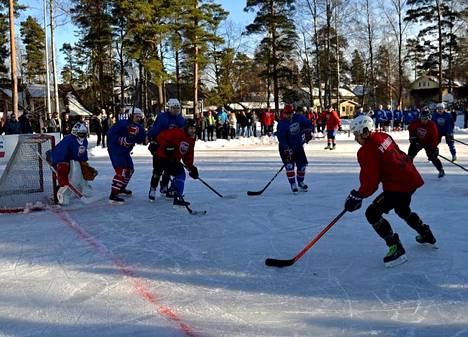
“You can tell the media that Jere (front right) pulled the puck from the corner into the front upper slot. Goalkeeper Juha ‘Silli’ Ågren can be asked about the quality of the shot,” Ilta-Sanom is told about Harjusuo’s Winter Classic.
